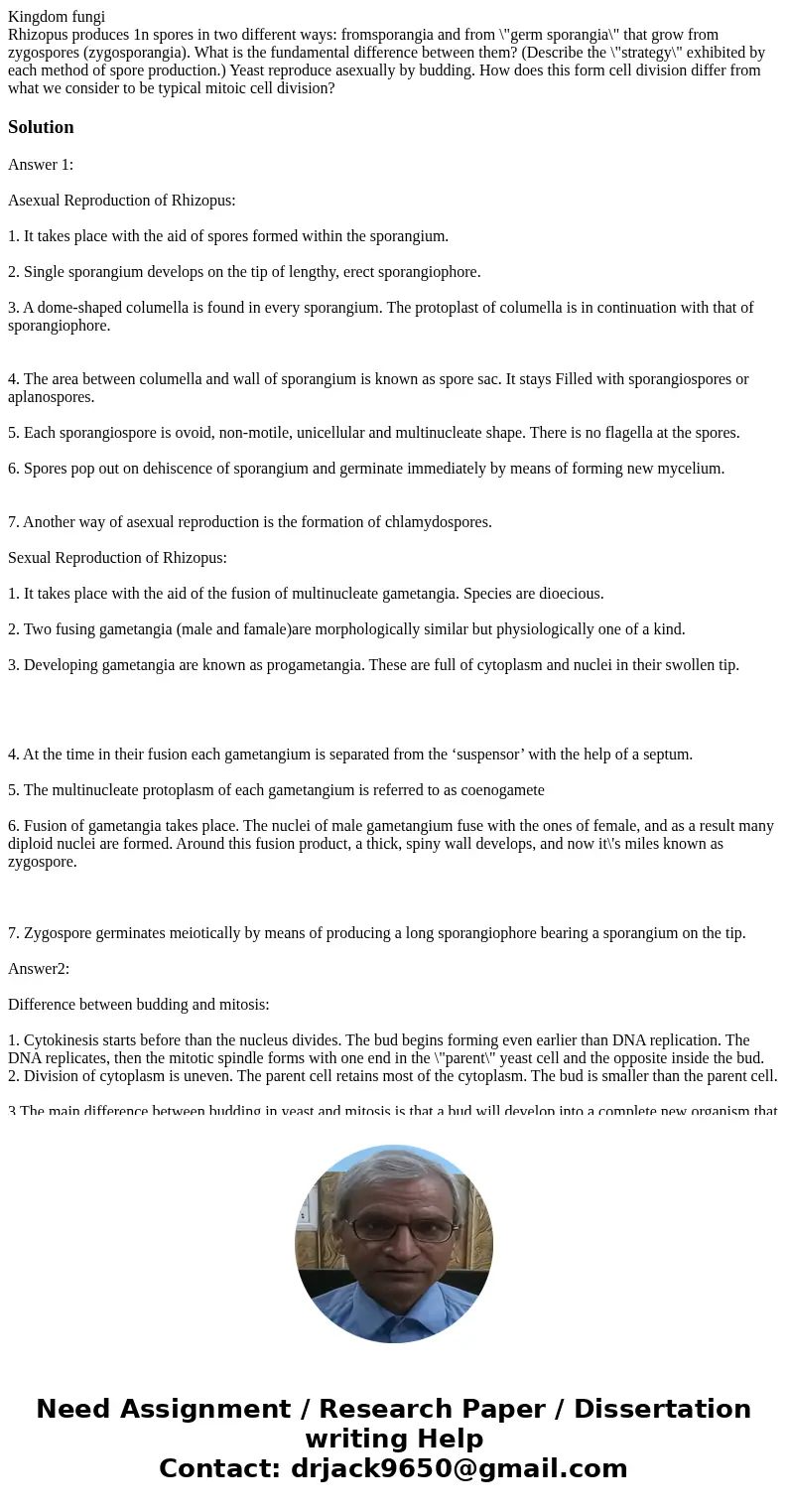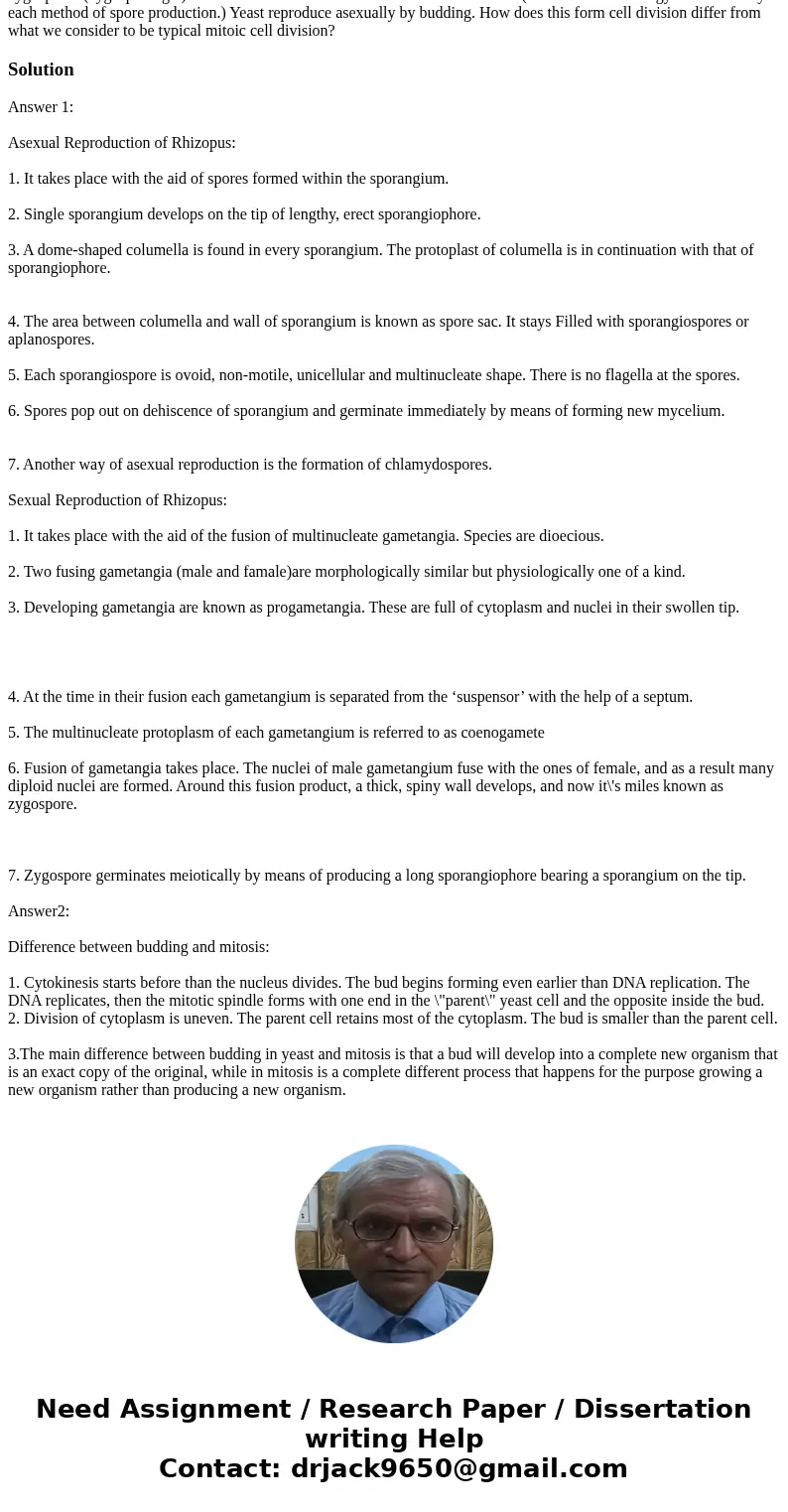Kingdom fungi Rhizopus produces 1n spores in two different w
Solution
Answer 1:
Asexual Reproduction of Rhizopus:
1. It takes place with the aid of spores formed within the sporangium.
2. Single sporangium develops on the tip of lengthy, erect sporangiophore.
3. A dome-shaped columella is found in every sporangium. The protoplast of columella is in continuation with that of sporangiophore.
4. The area between columella and wall of sporangium is known as spore sac. It stays Filled with sporangiospores or aplanospores.
5. Each sporangiospore is ovoid, non-motile, unicellular and multinucleate shape. There is no flagella at the spores.
6. Spores pop out on dehiscence of sporangium and germinate immediately by means of forming new mycelium.
7. Another way of asexual reproduction is the formation of chlamydospores.
Sexual Reproduction of Rhizopus:
1. It takes place with the aid of the fusion of multinucleate gametangia. Species are dioecious.
2. Two fusing gametangia (male and famale)are morphologically similar but physiologically one of a kind.
3. Developing gametangia are known as progametangia. These are full of cytoplasm and nuclei in their swollen tip.
4. At the time in their fusion each gametangium is separated from the ‘suspensor’ with the help of a septum.
5. The multinucleate protoplasm of each gametangium is referred to as coenogamete
6. Fusion of gametangia takes place. The nuclei of male gametangium fuse with the ones of female, and as a result many diploid nuclei are formed. Around this fusion product, a thick, spiny wall develops, and now it\'s miles known as zygospore.
7. Zygospore germinates meiotically by means of producing a long sporangiophore bearing a sporangium on the tip.
Answer2:
Difference between budding and mitosis:
1. Cytokinesis starts before than the nucleus divides. The bud begins forming even earlier than DNA replication. The DNA replicates, then the mitotic spindle forms with one end in the \"parent\" yeast cell and the opposite inside the bud.
2. Division of cytoplasm is uneven. The parent cell retains most of the cytoplasm. The bud is smaller than the parent cell.
3.The main difference between budding in yeast and mitosis is that a bud will develop into a complete new organism that is an exact copy of the original, while in mitosis is a complete different process that happens for the purpose growing a new organism rather than producing a new organism.


 Homework Sourse
Homework Sourse